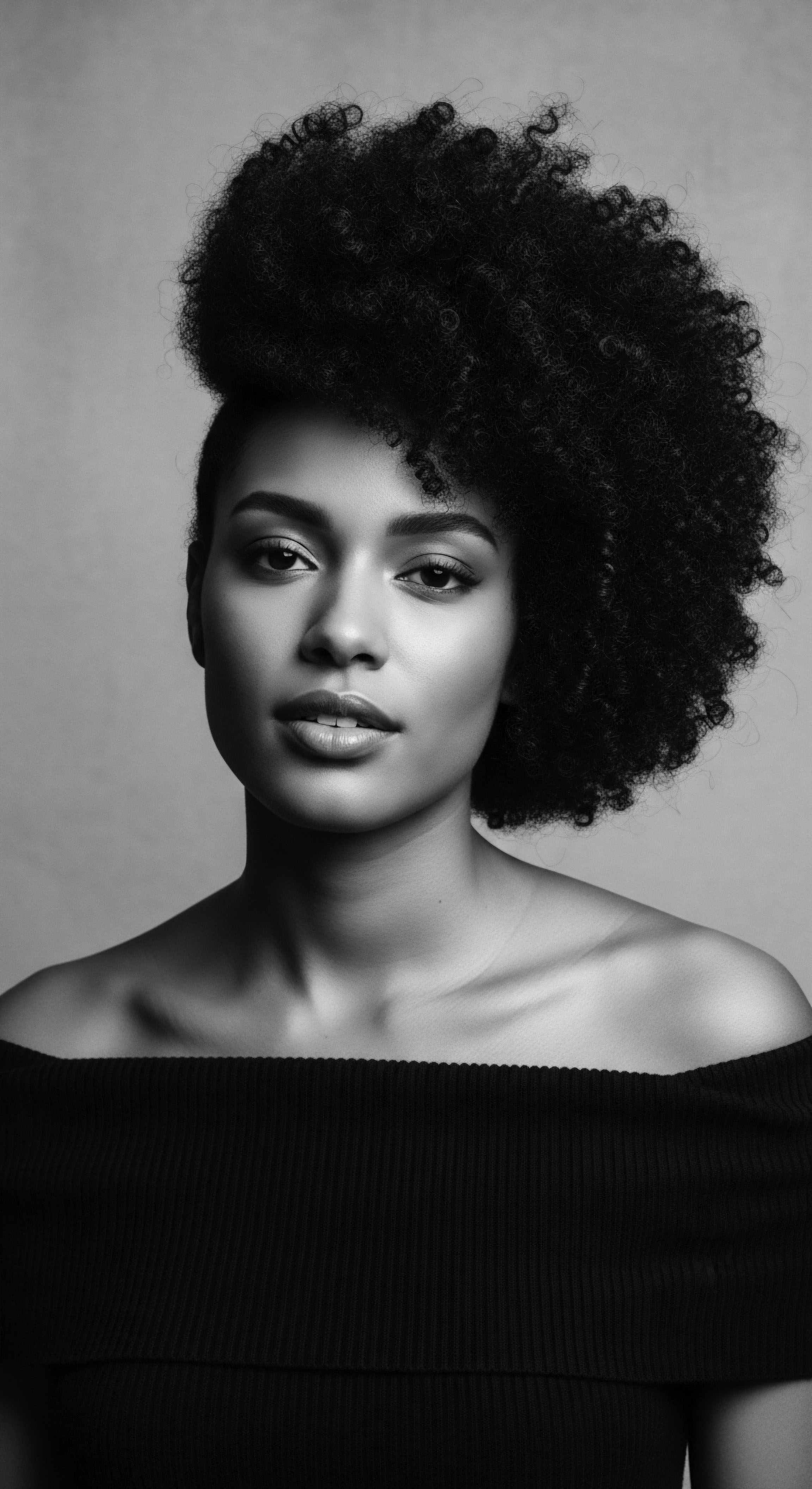
Roots
The story of Afro-textured hair, with its coils, curls, and undeniable spirit, is a profound testament to ancestral knowledge and resilience. It is a chronicle whispered through generations, carried in the rich soil and vibrant flora of African landscapes, then journeying across oceans, adapting, enduring. For those whose lineage connects to this deeply rooted heritage, the very structure of their hair—its unique helical shape, its varying porosities—has always dictated a distinct dialogue with nature, a conversation older than recorded history.
Botanical practices, far from simple beautification, formed the very bedrock of hair aesthetics, health, and identity across African civilizations and within the diaspora. These practices, inherited and refined, speak to a deep understanding of natural resources, a wisdom that respected the earth’s offerings and tailored them precisely to the needs of textured strands.
To understand how botanical practices shaped the aesthetics of Afro-textured hair, one must first appreciate the inherent characteristics of the hair itself. Each strand, elliptical in cross-section, grows in a tight helix, which naturally impedes the downward flow of the scalp’s sebum. This physiological reality means textured hair often requires external moisture to maintain its suppleness and sheen.
Ancestral communities understood this implicitly, long before modern science articulated the mechanisms. Their solutions were drawn directly from their environments.
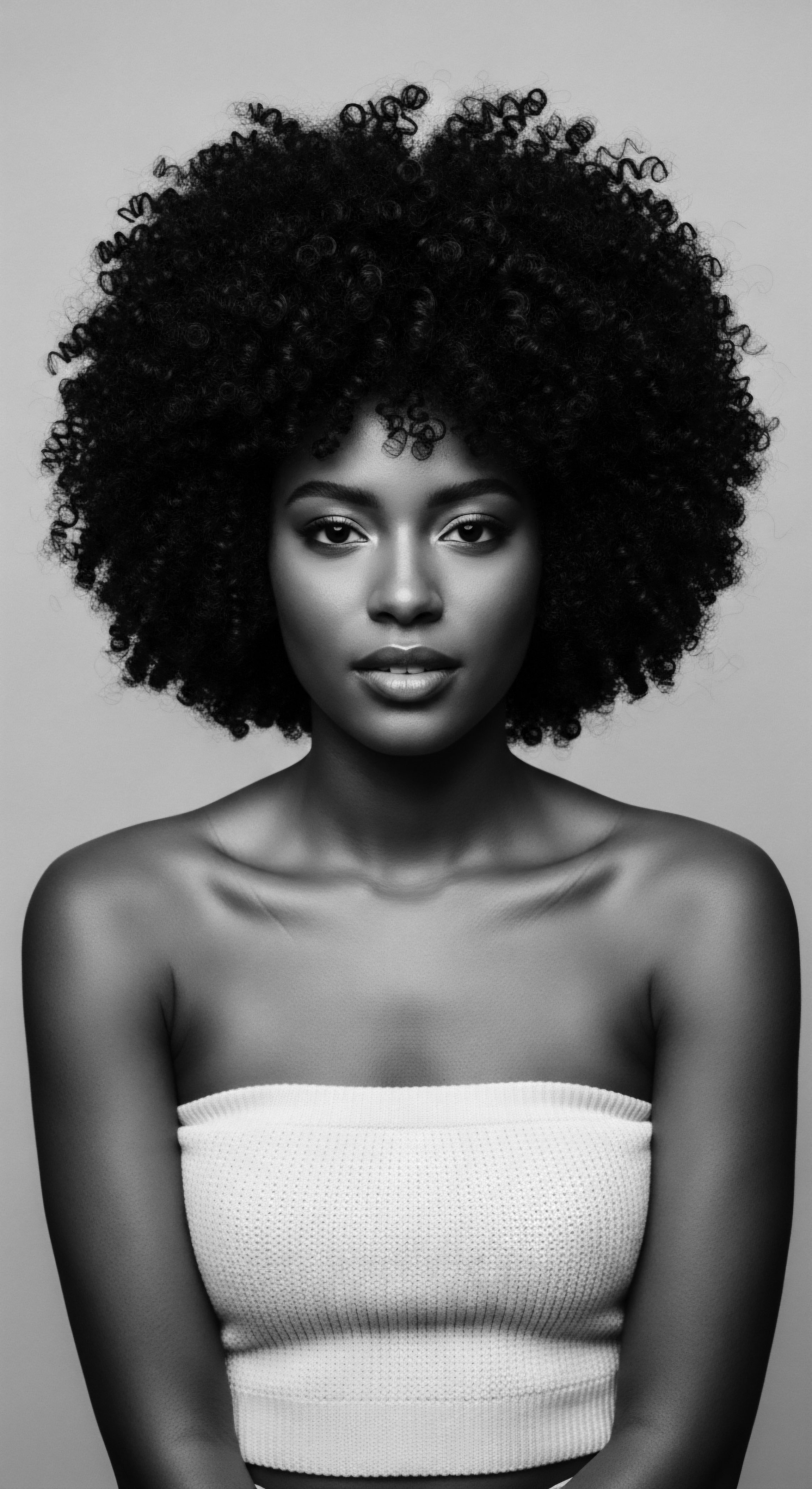
Ancient African Hair Anatomy and Early Botanical Connections
The scientific comprehension of hair anatomy today confirms the wisdom embedded in ancient practices. Afro-textured hair, with its tightly wound structure, possesses more disulfide bonds and a greater number of cuticle layers compared to straighter hair types. This structural complexity, while offering incredible versatility and strength, also makes it prone to dryness and breakage if not adequately cared for.
Early botanical applications centered on providing moisture and protection. Think of the oils, butters, and plant extracts that formed the daily regimen.
Ancestral botanical practices offered profound solutions for the unique physiological needs of textured hair, long before scientific descriptions existed.
Consider the practices of ancient Egypt, a civilization where hair held immense symbolic and aesthetic weight. Oils derived from plants like Castor, Almond, and Moringa were not simply luxury items; they were fundamental to hair health, providing nourishment and a protective layer against the harsh desert climate. Pomegranate oil, rich in antioxidants, vitamins, and essential fatty acids, served as a natural shield against environmental damage, helping hair remain resilient and hydrated.
(Egyptra Travel Services, 2025) Such botanical elixirs were meticulously applied, often massaged into the scalp to stimulate circulation and strengthen follicles, reducing breakage. (Egyptra Travel Services, 2025) The application of these plant-based oils was a ritual, a self-care practice deeply rooted in tradition and wellness.
The use of certain plant materials extended beyond simple conditioning. Henna, for instance, appears in archaeological records from as early as 3400 BCE in predynastic Egypt, used for dyeing hair and fingertips, possibly in mourning rituals or to restore youthful appearance. (Henna by Sienna) While its precise ritual significance remains debated, its presence points to a long history of botanical dyes in aesthetic practice.

Textured Hair Lexicon and Its Ancestral Roots
The language surrounding textured hair itself carries echoes of this botanical heritage. Terms like “coil,” “kink,” and “curl” describe the very helical patterns shaped by ancestral genetics, patterns that historical botanical treatments aimed to enhance, protect, and define. These were not just descriptors; they were acknowledgments of a living, breathing aspect of identity. Before the transatlantic slave trade, hair served as a visual language in many African societies, indicating age, religion, social rank, marital status, and tribal affiliation.
(Livara Natural Organics, 2023; PMC, 2023) Hair styling, often using natural products, became a meaningful social activity, a space where bonds formed and intergenerational knowledge transferred. (Halo Collective)
The practices that defined these aesthetics involved specific botanicals. For example, in West Africa, the Shea Tree (Vitellaria Paradoxa) offered its precious butter, a cornerstone of traditional hair care. Shea butter, often called “women’s gold,” was revered for its moisturizing and nourishing properties, rich in vitamins A and E. (Paulski Art, 2024; متجر زبدة الشيا, 2024) Its widespread use in daily routines and ceremonies underscores its cultural and practical significance.
Similarly, African Black Soap, known as ‘ose dudu’ in Nigeria, ‘alata simena’ in Ghana, and ‘sabulun salo’ in Mali, utilized plant ash from cocoa pods and plantain leaves, combined with palm kernel oil, coconut oil, and shea butter, providing a powerful, natural cleanser that cleansed without stripping essential moisture. (EcoFreax, 2023; Shea.254) These botanical formulations were meticulously crafted, their effectiveness a testament to centuries of observation and practice.

Ritual
The relationship between Afro-textured hair and botanical practices blossomed into intricate rituals, systems of care that extended beyond mere physical application. These practices were communal, deeply embedded in social structures, and often carried spiritual weight. The application of plant-based ingredients transformed into an act of reverence, a tender thread connecting individuals to their heritage, community, and the earth itself. The aesthetics of coiled and curled hair, in turn, were directly influenced by these deliberate, botanical-infused rituals, often emphasizing protective styling and natural definition.
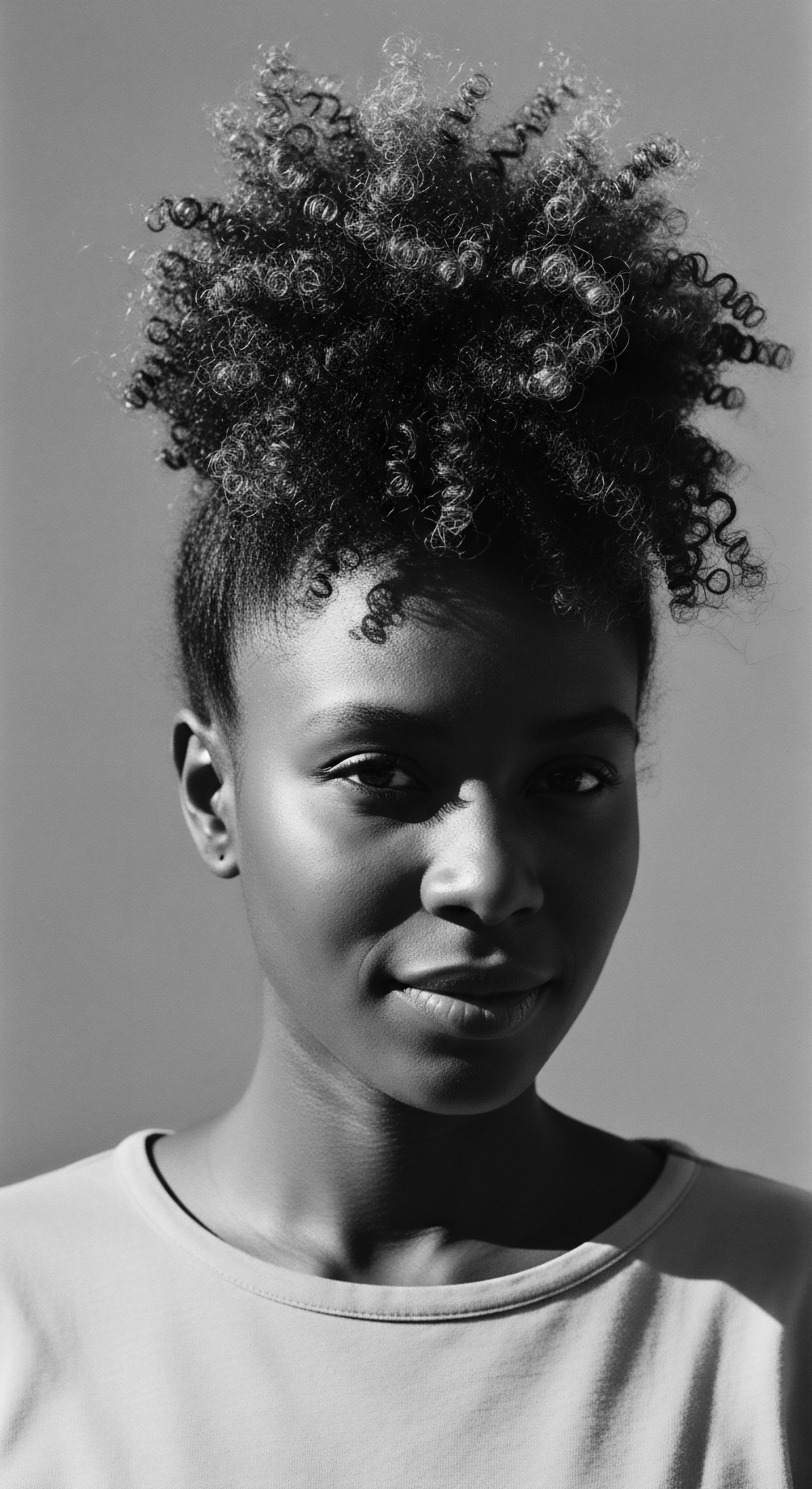
The Sacred Act of Oiling and Conditioning
Across various African cultures, the consistent application of natural oils and butters was a cornerstone of hair care. This was not a hurried task but a meditative act, performed with intent. Such rituals addressed the inherent tendency of textured hair to dry, providing the necessary lubrication to prevent breakage and impart a healthy luster.
- Shea Butter ❉ A staple from West Africa, shea butter (Vitellaria paradoxa) was collected and processed, often by women in communal efforts, into a rich emollient. It provided significant moisture, making hair pliable for styling and offering protection from environmental elements. (Paulski Art, 2024; متجر زبدة الشيا, 2024) Ancient accounts, including those associated with Queen Nefertiti and Cleopatra, attest to its esteemed status for skin and hair care. (Paulski Art, 2024; Ciafe, 2023)
- Palm Oil ❉ Indigenous to West and Central Africa, palm oil, derived from the fruit of the oil palm (Elaeis guineensis), was another significant botanical. It was used for its moisturizing properties, often mixed with other ingredients to create a conditioning paste that would nourish the scalp and hair, promoting suppleness and shine. (Africa Research Connect)
- Castor Oil ❉ Though its origins are debated, castor oil was certainly utilized in ancient Egypt for nourishing and strengthening hair, thanks to its ricinoleic acid content which promotes scalp circulation and hair growth. (Katherine Haircare, 2025)
Hair oiling, far from simple maintenance, was a cherished, centuries-old ritual across diverse cultures, fostering physical wellness and mental tranquility.
These oils and butters allowed for manipulation of hair into styles that were both aesthetic and functional, protecting the delicate strands. For instance, intricate braiding styles, often taking hours or even days, were common across Africa and were frequently performed with the aid of such botanicals to keep hair healthy and moisturized. (Livara Natural Organics, 2023) The Himba tribe in Southwestern Namibia, for example, has traditionally used a mixture of ground ochre, goat hair, and butter to create their distinct dreadlocks, an aesthetic deeply tied to their cultural identity and environment. (Livara Natural Organics, 2023)

What Traditional Cleansing Botanicals Were Employed?
Cleansing rituals were equally important, though perhaps less discussed than conditioning. Botanical ingredients provided gentle yet effective ways to purify the scalp and hair, preparing it for subsequent moisturizing and styling.
- African Black Soap ❉ Known variously as ‘ose dudu’, ‘alata simena’, or ‘sabulun salo’, this traditional soap from West Africa is a testament to communal, sustainable production. It is handcrafted from plantain skins and cocoa pods (burned to ash), blended with palm kernel oil, coconut oil, and shea butter. (EcoFreax, 2023; Shea.254) This natural cleanser removes dirt, oil, and buildup without stripping the hair of its essential moisture, leaving it soft and healthy. Its natural properties offer antimicrobial and antifungal benefits for scalp health. (The Love of People, 2023)
- Rhassoul Clay ❉ Originating from the Atlas Mountains of Morocco, rhassoul clay (or ghassoul) is a mineral-rich clay used for centuries as a natural cleanser for both skin and hair. When mixed with water, it creates a paste that gently cleanses, detoxifies, and conditions the hair, imparting softness and shine without harsh chemicals. Its ability to absorb impurities while preserving moisture aligns with the traditional emphasis on balanced hair health.
- Aloe Vera ❉ Though found globally, aloe vera has a long history of use in various African communities for its medicinal properties, including hair care. Its gel, rich in vitamins, minerals, and moisture, has been applied directly to the scalp to cleanse, soothe irritation, reduce dandruff, and stimulate healthy growth. (Medical News Today; African Pride; Lanzaloe)
The ritualistic application of these cleansing agents, often accompanied by massage, was a holistic practice. It addressed the physical cleanliness of the hair and scalp, but also contributed to a sense of well-being, easing tension and promoting relaxation, aligning with broader self-care philosophies.

How Did Botanical Dyes and Treatments Shape Hair Aesthetics?
Botanical practices extended to the aesthetic manipulation of hair color and texture through natural dyes and treatments. These applications were not merely cosmetic; they often carried social or spiritual significance, communicating status, age, or readiness for certain life stages.
In some West African traditions, Hibiscus (Hibiscus Sabdariffa), particularly the red variety, has been used as a hair spray or rinse to strengthen hair strands, promote growth, and even darken hair color, lending it a rich black hue. (YouTube, 2025; MINATURE, 2024; TK TrichoKare; Africa Research Connect) The amino acids and vitamin C present in hibiscus contribute to strengthening hair and encouraging growth. Its mucilage content acts as a natural conditioner, adding moisture and sheen. (MINATURE, 2024; ijrpr, 2024)
The use of Kola Nut, beyond its ceremonial significance as a symbol of peace and hospitality in West Africa, also found its place in hair care. Rich in caffeine, kola nut was applied as a hair spray to reduce breakage, prevent hair loss, and boost blood flow to the scalp, promoting stronger, healthier strands. (YouTube, 2021; Nutreov) This application highlights the intersection of cultural practices and observed botanical efficacy.
| Botanical Ingredient Shea Butter (Vitellaria paradoxa) |
| Primary Historical Use Deep conditioning, scalp health, styling aid, UV protection. Used across West Africa for centuries to moisturize and protect hair. (Paulski Art, 2024; Ciafe, 2023) |
| Contemporary Scientific Insight Rich in vitamins A, E, F and fatty acids, provides emollients and antioxidants. (Paulski Art, 2024) Studies confirm its moisturizing and anti-inflammatory benefits. (Ciafe, 2023) |
| Botanical Ingredient African Black Soap (Various plant ashes) |
| Primary Historical Use Cleansing agent for hair and scalp, often used for its gentle yet effective purification. (EcoFreax, 2023) |
| Contemporary Scientific Insight Composed of plantain skin, cocoa pods, palm kernel oil, coconut oil, and shea butter. Contains natural exfoliants and antimicrobials that support scalp health. (Shea.254; The Love of People, 2023) |
| Botanical Ingredient Hibiscus (Hibiscus sabdariffa) |
| Primary Historical Use Hair darkening, strengthening, growth stimulation. Utilized in West Africa for conditioning and promoting hair vitality. (YouTube, 2025; MINATURE, 2024) |
| Contemporary Scientific Insight Contains amino acids, vitamin C, and mucilage. These support keratin production, strengthen strands, and provide natural conditioning. (MINATURE, 2024; ijrpr, 2024) |
| Botanical Ingredient Aloe Vera (Aloe barbadensis miller) |
| Primary Historical Use Scalp soothing, cleansing, moisturizing, promotes hair growth. Used for millennia for its healing and regenerative properties. (Medical News Today; Lanzaloe) |
| Contemporary Scientific Insight Rich in vitamins (A, C, E, B12), minerals (zinc, copper), and enzymes. Its proteolytic enzymes repair dead skin cells on the scalp, clearing follicles. (African Pride) |
| Botanical Ingredient This table highlights a few prominent botanical agents whose traditional uses for textured hair have a deep history, often validated by contemporary scientific understanding. |

Relay
The enduring legacy of historical botanical practices, particularly in shaping Afro-textured hair aesthetics, is not a relic of the past; it is a living, evolving current that continues to inform modern care. This knowledge, passed through oral tradition, communal practice, and sheer necessity, represents an applied ethnobotany honed over centuries. Understanding this relay of wisdom, from ancient African civilizations through the crucible of the diaspora, allows for a more profound appreciation of textured hair heritage. The traditional use of plants served not only practical purposes for hair care but also maintained cultural identity and fostered collective well-being in the face of adversity.
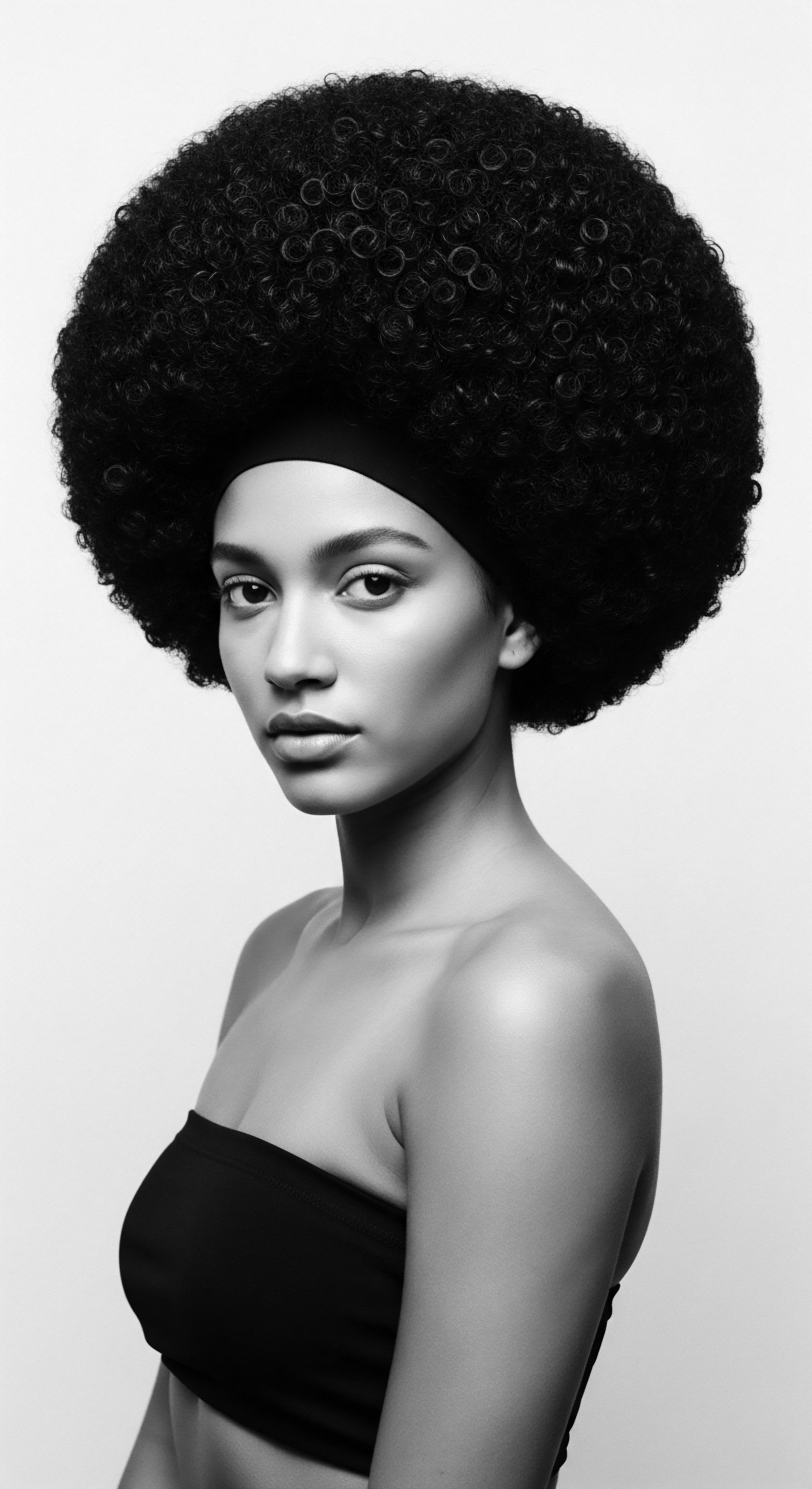
Connecting Ancient Wisdom to Modern Understanding
Modern hair science, with its sophisticated analytical tools, frequently validates the empirical wisdom of ancestral botanical practices. The compounds found in plants used for generations for their efficacy on textured hair—lipids, saponins, vitamins, minerals, and antioxidants—are now chemically isolated and studied. For example, the emollient properties of shea butter, traditionally used to combat the dryness characteristic of coiled hair, are now attributed to its high concentration of oleic and stearic acids, which mirror the protective lipids in the hair’s outer layers. Similarly, the cleansing action of African Black Soap comes from the saponins naturally present in its plant ash components, offering a gentler alternative to synthetic surfactants.
An ethnobotanical survey in Eastern Cameroon identified 36 plant species used for cosmetic purposes, including hair care, among the Gbaya ethnic group. The most frequently used plant part was seeds (26.36% of citations), highlighting a specific traditional preference for these nutrient-rich components. Among the prominent species noted for skin, hair, and dental issues were Elaeis Guineensis (palm Oil), Carica Papaya (papaya), and Aloe Vera.
The study documented 78 distinct cosmetic recipes, with pharmacognostic analysis revealing diverse phytochemicals—enzymes, minerals, vitamins, alkaloids, and essential oils—all contributing to their efficacy as active cosmetic ingredients. (Africa Research Connect) This research demonstrates how localized ancestral knowledge, focused on specific plant parts like seeds, aligns with modern scientific understanding of plant compounds.
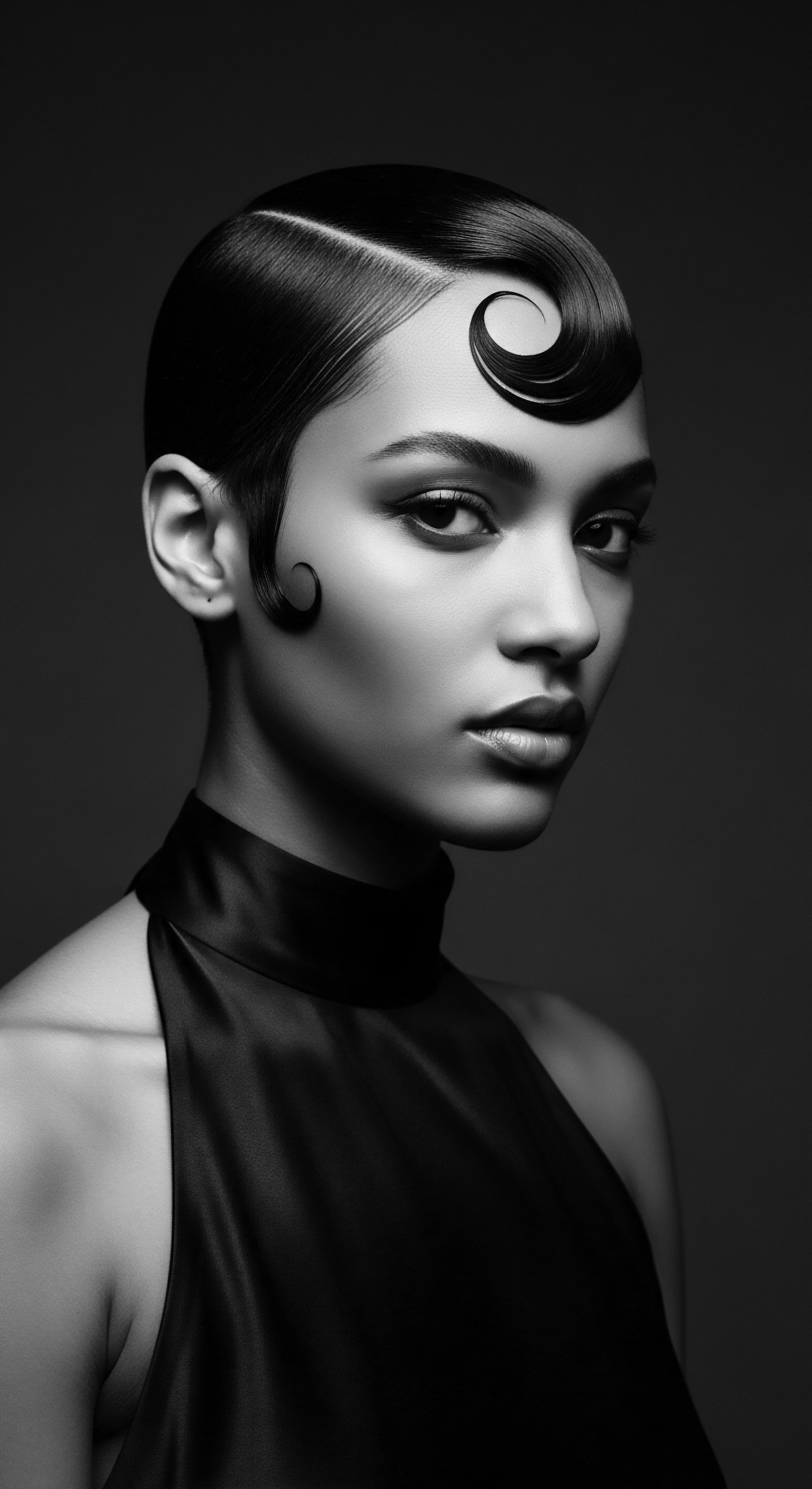
How Did Enslavement Alter Botanical Hair Practices?
The transatlantic slave trade presented an immense rupture in the continuity of African hair traditions. Enslaved Africans were often stripped of their cultural identity, including the communal hair care rituals and access to traditional botanicals. Their heads were frequently shaved for sanitary reasons during the Middle Passage, a dehumanizing act that severed a deeply symbolic connection to self and community.
(Halo Collective) Despite this, the resilience of heritage persisted. Enslaved individuals adapted, seeking out local botanicals in the Americas that mimicked the properties of those they had left behind.
For enslaved people, adapting botanical practices was an act of cultural preservation and quiet resistance.
In the brutal context of plantation life, ingenuity became a form of survival. Lacking traditional African oils and butters, enslaved women often used materials available to them, however crude. Accounts from slave narratives speak of using bacon grease, butter, or even kerosene, as desperate substitutes for conditioners and shampoos. (Livara Natural Organics, 2023) However, alongside these harsh realities, a hidden ethnobotanical knowledge persisted.
Enslaved people, particularly women, possessed intimate knowledge of wild medicines and local plant life, often venturing into the surrounding environment to gather herbs for various remedies. (OpenSIUC) While specific mentions of hair care botanicals in slave narratives are sparse due to the focus on survival and resistance, the broader understanding of plant medicine within these communities suggests an ongoing, if often covert, engagement with nature’s offerings for well-being, which would have extended to hair health when possible.
The clandestine use of certain plants, even if not solely for hair, speaks to a deep connection to indigenous knowledge. For instance, the use of certain herbs for poultices or internal remedies, sometimes related to controlling one’s own body in defiance of enslavement, hints at a broader, sophisticated botanical literacy. (OpenSIUC) This discreet knowledge of plant properties, for both healing and personal care, was a vital aspect of cultural continuity and self-determination.

From Protest to Celebration ❉ The Natural Hair Movement’s Botanical Roots
The aesthetic shift in Afro-textured hair from straightened styles, often achieved with harsh chemical relaxers, back to its natural form, owes much to a reconnection with botanical principles. The Natural Hair Movement, gaining prominence in the 1960s with the “Black Is Beautiful” assertion, and resurging in recent decades, championed the innate beauty of coils and curls. (JSTOR Daily, 2019; Halo Collective) This movement inherently fostered a return to gentler, plant-based care methods, reminiscent of ancestral practices.
The industry for natural Black hair care has grown significantly, reaching an estimated $2.5 billion in the US alone, reflecting this renewed emphasis on authentic, botanical-rich products. (Halo Collective)
The focus now centers on formulations that respect hair’s natural structure.
- Moisture Retention ❉ Products prioritize emollients like shea butter, coconut oil, and argan oil to seal in moisture, a direct echo of traditional practices that guarded against dryness.
- Gentle Cleansing ❉ The embrace of African Black Soap or similar botanical cleansers and sulfate-free shampoos reflects a conscious move away from harsh stripping agents, aligning with traditional methods that cleaned without compromising natural oils.
- Scalp Health ❉ Ingredients with anti-inflammatory and antimicrobial properties, such as tea tree oil (from Australian Melaleuca alternifolia, but reflecting a similar botanical principle to historical African scalp treatments) and aloe vera, mirror ancestral practices that recognized scalp vitality as fundamental to hair health.
The legacy of botanical practices for Afro-textured hair aesthetics is therefore a dynamic one. It spans millennia, crossing continents, surviving oppression, and resurfacing in modern times as a powerful expression of identity, self-care, and cultural pride. The relay of this knowledge, from ancient gardens to contemporary formulations, demonstrates an enduring reverence for nature’s ability to adorn and sustain the beauty of Afro-textured hair.

Reflection
The journey through the botanical practices that shaped Afro-textured hair aesthetics reveals a vibrant, living archive, a narrative of continuity woven into the very fabric of heritage. From the sun-drenched landscapes of ancient Africa to the enduring spirit of the diaspora, the soul of a strand has always been deeply intertwined with the earth’s bounty. We see this in the thoughtful cultivation of plants, the meticulous preparation of remedies, and the communal rituals that transformed hair care into an act of self-reverence and cultural affirmation. Each application of shea butter, each cleansing with black soap, each adornment with botanical dyes, carried centuries of accumulated wisdom, a quiet yet powerful resistance against erasure.
This is a story not of static historical points but of constant, fluid adaptation. The fundamental needs of textured hair, its coiled and curious nature, called forth specific botanical responses from diverse environments. Over time, these responses solidified into practices, becoming ancestral wisdom. When circumstances shifted, forcing communities into new lands and new climates, the ingenuity persisted.
The search for plant-based solutions, whether through direct replication or creative substitution, spoke to an unbroken chain of knowledge and a resolute will to maintain connection to identity. The aesthetic expressions that emerged from these practices were never superficial; they were declarations of belonging, markers of status, and symbols of an unbreakable spirit. The deep, dark sheen imparted by certain botanical infusions, the strength provided by nourishing oils, the artistic statements made through intricate styles—all were rooted in a botanical sensibility.
The contemporary appreciation for natural textured hair, manifesting in a global movement, stands as a testament to this profound legacy. It is a return to source, a conscious decision to honor the inherent beauty and heritage of Afro-textured strands. This modern re-engagement is not a simple trend. It represents a reconnection with a wisdom that recognized the hair as a sacred part of the self, deserving of gentle, natural care.
The enduring significance of historical botanical practices lies in their timeless validation of what textured hair needs to truly thrive ❉ nourishment, protection, and a deep, respectful connection to the earth’s offerings. The soul of a strand truly reflects a living, breathing history, continually reminding us of the enduring power of heritage and the wisdom found in nature.
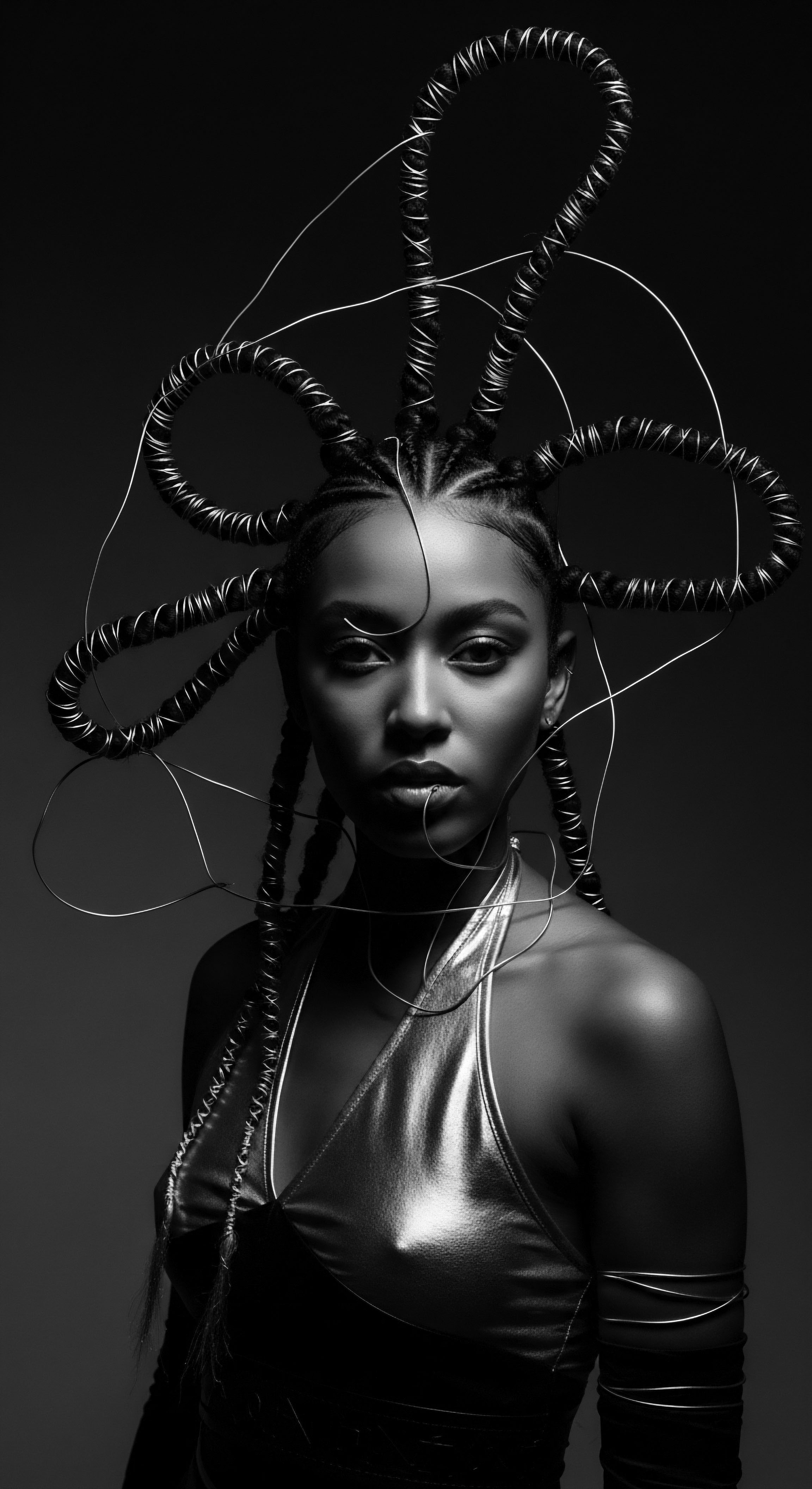
References
- Ciafe. (2023). Shea Butter – Explainer.
- EcoFreax. (2023). African Black Soap ❉ The Natural Wonder for Skin and Hair.
- Egyptra Travel Services. (2025). From Ancient Egypt to Modern Beauty ❉ Timeless Cosmetic Secrets.
- Halo Collective. End Hair Discrimination.
- Henna by Sienna. Henna in the Ancient World.
- ijrpr. (2024). HIBISCUS FLOWER EXTRACT AS A NATURAL HAIR GROWTH STIMULANT ❉ A COMPREHENSIVE REVIEW OF MECHANISM AND APPLICATION.
- JSTOR Daily. (2019). How Natural Black Hair at Work Became a Civil Rights Issue.
- Katherine Haircare. (2025). I Tried a 4,000-Year-Old Egyptian Hair Mask—Here’s What Happened.
- Lanzaloe. Aloe vera for hair care.
- Livara Natural Organics. (2023). Black History Month ❉ The Rich History of Our African Hair.
- Medical News Today. Benefits of aloe vera for hair.
- MINATURE. (2024). How Does Hibiscus Powder Boost Hair Growth?
- MDPI. (2022). Afro-Ethnic Hairstyling Trends, Risks, and Recommendations.
- متجر زبدة الشيا. (2024). What Is Shea Butter?
- Nutreov. The kola nut ❉ ses propriétés et ses bienfaits.
- OpenSIUC. Plantation Medicine and Health Care in the Old South.
- Paulski Art. (2024). The Rich History of Shea Butter and Its Origins.
- PMC. (2023). The Person Beneath the Hair ❉ Hair Discrimination, Health, and Well-Being.
- ResearchGate. (2024). Cosmetopoeia of African Plants in Hair Treatment and Care ❉ Topical Nutrition and the Antidiabetic Connection?
- Shea.254. 250g Solid Raw African Black Soap.
- Smith Scholarworks. Black women’s natural hair care communities ❉ social, political, and cultural implications.
- The Love of People. (2023). 9 Benefits Of African Black Soap For Hair.
- TK TrichoKare. Botanical Benefits.
- Africa Research Connect. (2025). Ethnobotany and pharmacognostic perspective of plant species used as traditional cosmetics and cosmeceuticals among the Gbaya ethnic group in Eastern Cameroon.
- YouTube. (2021). SHOCKING AFRICAN HAIR GROWTH SECRET SPRAY! Instant Kolanut Hair Spray/ Use Once A Week.
- YouTube. (2025). DO NOT IGNORE THIS AFRICAN HAIR SECRET FOR 3X HAIR GROWTH.
